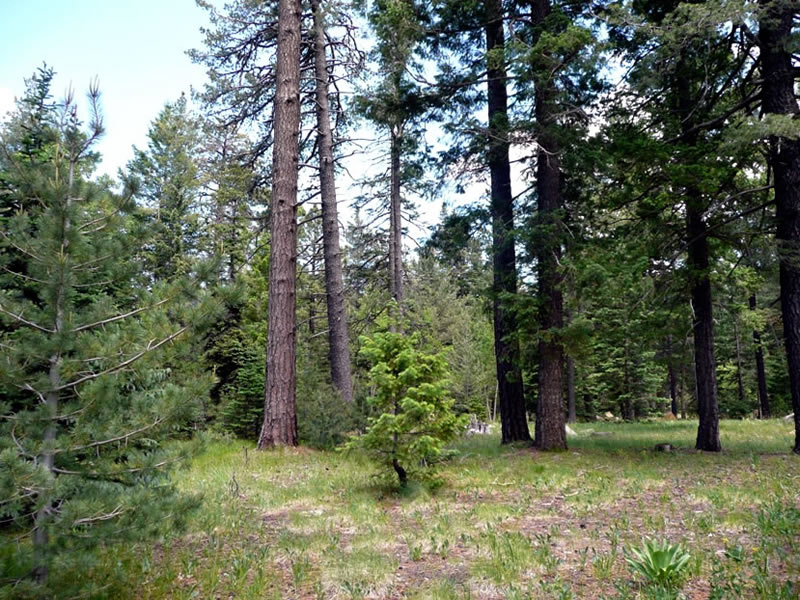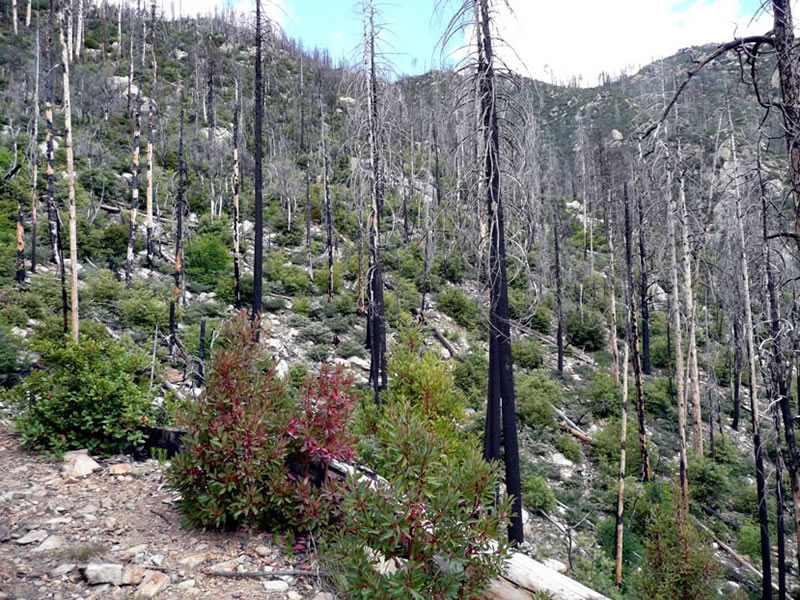Douglas-fir - Mixed Conifer Forests
These forests occur at elevations of 6,000-8,800 feet. The species have strong connections with the Rocky Mountains. Tree cover is at least 50 percent, but often 80 percent in favorable habitats. As the name implies, this community seldom forms stands of a single species. Douglas-fir (Pseudotsuga menziesii), white fir (Abies concolor), New Mexico locust (Robinia neomexicana), Bigtooth maple (Acer grandidentatum), and southwestern white pine (Pinus strobiformis) are the most important species in mature stands. Arizona pine (Pinus arizonica), Gambel oak (Quercus gambelii), silverleaf oak (Q. hypoleucoides), hoptree (Ptelea trifoliata), aspen (Populus tremuloides), and pointleaf manzanita (Arctostaphylos pungens) occur in stands with past disturbance. These forests are found most extensively in the Pinaleno, Chiricahua, Santa Catalina, and Huachuca mountains, with isolated stands in some of the other higher mountain ranges.
Further Reading
Bennett, P.S., M.R. Kunzmann and L.A. Graham. 2004. Descriptions of Arizona vegetation represented on the gap vegetation map. (PDF)









